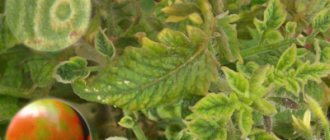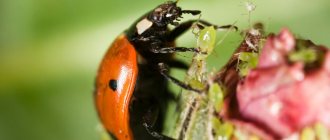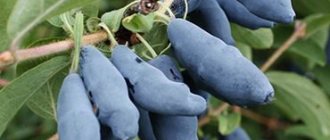Gray mold is a rather dangerous and common disease caused by the fungus Botrytis.
If the infection is extensive, the plants die quickly due to loss of turgor and stopping photosynthesis. The dying parts are the first to be affected, then the formation of buds and the growth of new shoots and fruits stop. At best, the yield of fruits, berries, and vegetables decreases. When the humidity level remains high, all parts of the plant are covered with mycelium, and spores are carried by the wind. There are folk and store-bought methods to combat this fungus, but prevention gives the best results.
Signs of illness
The first sign of infection of an area is the appearance of a white coating or brown spots on the stems and leaves. The spots may appear watery, and when there is high humidity, they will become covered with mycelium. In windy weather, they are transferred to healthy crops, which can lead to infection of the entire area.
The causative agent of gray rot is the botrytis fungus, which belongs to the genus of wound parasites. More often, the fungus affects crops growing in greenhouses, on the stems and leaves of which droplets of moisture remain after watering. Strong, healthy plants are more resistant to infection, so gray mold is first found on weakened, diseased crops. Whole, undamaged fruits rarely become rotten, but dead and damaged areas are the most susceptible to spores and mycelia.
There is a high risk of damage to trees after grafting, since gray mold can spread both along cut cuttings and along the cut surface at the grafting site.
How to distinguish gray mold from late blight?
The symptoms of gray rot are similar to those of late blight, which develops as a result of plant infection by the fungus Phytophthora infestans. Both diseases develop under conditions of high humidity, and it is difficult for inexperienced gardeners to identify the type of disease at the very beginning of its development.
Symptoms of late blight include:
- The appearance of yellowish spots on the stems and leaves, which turn brown over time.
- After 3-5 days, a fungal light gray or whitish coating forms on the spots.
- The affected areas become large and dense.
- The leaves become completely dry, and the fruits and stems rot.
A distinctive feature of late blight is its rapid spread, but it can be easily stopped with the help of fungicides. Gray mold is characterized by slow but persistent progression. Fighting this disease is more difficult than late blight.
Causes of the appearance and spread of fungus
There may be several reasons why fungus forms on the soil surface:
- Using the wrong regime for watering the plant, which leads to stagnation of liquid and increased soil moisture.
- Low temperature and high humidity of the room in which the flower is located.
- Application for cold water irrigation.
- Poorly functioning drainage system. If the holes do not match the size of the pot, they become clogged. Which leads to stagnation of water in the soil. After 2-4 days, the first traces of mold may appear.
- Poor quality soil.
Excess moisture and infrequent ventilation contribute to the rapid spread of mold . The most common times for infection to appear are autumn and spring. During these periods of time, cold air accumulates in the room, which leads to the slow evaporation of moisture from the surface of the soil. As a result, fluid stagnation occurs and fungal spores spread.
The cause of fungus can be increased dampness in the house. This may be due to poor communication systems or the presence of a basement.
What plants does gray rot affect?
Most often, gardeners and gardeners have to fight gray rot fungus on the following crops:
- Strawberries.
- Cabbage.
- Grape.
- Currant.
- Peonies.
- Gladioli.
- Tomatoes.
- Pepper.
- Cucumbers.
The disease also often affects sunflowers, raspberries, legumes, indoor orchids, roses, violets, and buckwheat. Carrots, beets and other root vegetables begin to hurt during storage. Their surface softens and becomes covered with a dark, damp coating.
How to cure gray rot on vegetables
When the first symptoms of rot appear, you must immediately resort to the following measures:
- Remove all infected bushes.
- Remove fruits affected by rot as far from the site as possible, burn or bury them. You cannot throw them into a compost bin.
- Raise the temperature in the room or greenhouse.
- Treat the affected plants with Zaslon, Bayleton, Barrier or Fundazol.
Timely measures taken significantly increase the chance of saving plants.
Tomatoes
To prevent damage to tomatoes, hybrid varieties that are resistant to the disease should be grown. These varieties include Pilgrim, Vasilievna. Before sowing seeds, they are treated with fungicides containing sulfur. When symptoms of gray rot appear, tomatoes are treated with Bordeaux mixture, copper sulfate, and XOM.
Cabbage
The disease on cabbage progresses very quickly, so it is difficult to fight it. The best way to combat gray mold on cabbage is prevention, which includes the use of fungus-resistant varieties, timely harvesting of cabbage heads, and compliance with crop rotation. Before storing, the heads should be thoroughly dried and the basement should be disinfected.
Treatment of cabbage involves the timely removal of damaged leaves or whole plants.
On cucumbers
To combat the botrytis fungus on cucumbers, the affected fruits are treated with a mixture of wood ash, chalk and vitriol, taken in equal proportions. Before planting, cucumber seeds need to be soaked in a disinfectant solution. To prevent damage to cucumbers, young plants are sprayed with Trichodermin, Euparen Multi. A solution of copper oxychloride (CHOM), prepared at the rate of 40 g of product per 10 liters of water, also has a good effect.
On the peppers
If pepper is damaged, it is necessary to trim off the damaged areas and treat the sections with a mixture prepared from chalk and fungicide. If pepper growing in a greenhouse is damaged, after harvesting the tops, it is recommended to replace the top layer of soil to a depth of at least 5-7 cm. In order to prevent damage to greenhouse plants, it is necessary to provide them with sufficient ventilation.
On the sunflower
When sunflower fields are damaged, up to 50% of the crop can be lost. To avoid this, it is recommended to observe crop rotation. It is allowed to sow sunflowers in the old place no earlier than after 8-10 years. It is advisable to sow sunflowers in the place where grain crops grew. When symptoms of the disease appear, plants are treated with Pictor fungicide.
Fighting gray mold on bushes and trees
When fruit and berry crops are damaged, gray rot fungal spores penetrate the berries and fruits, which leads to a significant reduction in yield. When branches and shoots become infected, the plant begins to ache, dry out, and its resistance to disease decreases. Over time, the branches fall off, and large drying areas of wood appear on the tree bark.
Gray rot of grapes
If the grapes are slightly infected, you need to spray them with potassium iodide prepared from 2 g of the drug and 10 liters of water. A solution of copper sulfate prepared from 10 g of the product and 1 bucket of water can have a good effect. If the above remedies do not help, you should resort to spraying with chemicals - Fundazol, Topaz or Immunocytophyte.
Gray rot of strawberries (garden strawberries)
If strawberry beds are affected by gray rot, they are treated with infusions of garlic or mustard powder. If there is no result, they resort to treatment with chemicals - Falcon, Boxwood, Strobi, Horus. The best method of combating gray mold on strawberries is prevention, which consists of spraying young shoots with an iodine solution prepared at the rate of 10 ml per 10 liters of water. Such spraying is carried out at least 2-3 times with intervals of 10 days.
On flowers
Garden and indoor flowers are susceptible to gray rot no less than other crops. It has been noticed that early varieties are most susceptible to fungus. More often, botrytis is found at the base of the shoots, and over time the fungus spreads to flowers and buds, so when inspecting plants, you should first pay attention to this part. On grafted roses, the disease affects the root collar, which can lead to their rapid death.
On peonies
The fight against fungus on peonies begins with treating the roots when planting with hot water. To do this, the roots are immersed in water heated to a temperature of 60-70 degrees for 10 minutes. You need to add two handfuls of wood ash to the planting hole. When the peonies finish blooming, cut off all the stems. If signs of gray rot are detected on flowers, they are sprayed with Vectra, Maxim or Skor.
On roses
If a gray coating appears on the edges of rose leaves, which quickly spreads to shoots, buds and leaves, experienced gardeners recommend using Fundazol, Gamair or Fitosporin-M. Spraying is carried out every 4-5 days until the symptoms of the fungus completely disappear. Damaged parts are cut off and destroyed before processing. Subsequently, the recovered roses are sprayed with a weak solution of potassium permanganate, also watering the soil in the tree trunk with this solution.
On the lilies
Botrytis on lilies appears as brownish spots with red edges. If the affected leaves are not picked off in time, the fungus will spread throughout the plant, leading to its death.
Late blight
Photo: floweryvale.ru
This formidable fungal disease is well known to gardeners and gardeners. But it can also affect indoor plants. The main causes of late blight are the use of contaminated soil and irrigation with rainwater.
Signs
First, brownish-purple spots form on the affected parts of the plant, which quickly cover large areas. The spots turn black, the stems and leaves soften. If urgent measures are not taken, the pet will quickly die.
Fighting methods
No traditional methods will help get rid of such a problem. Treatment of late blight is effective only with the help of special drugs. Typically, gardeners use Glyokladin, Fitosporin, Previkur Energy. It is very important to repeat the treatment several times.
Prevention
Before planting a plant in a pot, soak its root or bulb in a solution of a product effective against late blight. From time to time, spray your home flower with fungicidal preparations.
Try not to over-moisten the soil when watering. Loosen the soil periodically to provide air access to the roots.
Gray mold on indoor plants
The most common causes of gray rot in indoor plants are:
- Excessive watering.
- Infection from other flowers.
- Replanting flowers in infected pots.
Most often, the fungus affects violets and orchids, although it can be found on phalaenopsis, cattleyas, fuchsias, begonias, and azaleas.
On an orchid
The use of fungicides when orchids are affected helps prevent further outbreaks of the disease. To avoid the spread of the fungus to healthy parts, you need to remove all infected leaves and flowers, and if necessary, cut off the affected stems.
After purchasing a new orchid, it is recommended to keep it isolated from other flowers for two weeks to make sure there is no fungus.
On violets
If symptoms of gray rot appear on the Uzambara violet, it is necessary to spray it with Teldor, Sumilex or another fungicidal agent as soon as possible. As with orchids, newly purchased violets should be kept isolated from other flowers for 2-4 weeks.
Types of mold
When faced with a problem such as mold in a flower pot, how to get rid of it depends on its type and the reasons for its occurrence.
Black mold
Black mold occurs due to high humidity. It can have different shades.
When this type of mold appears, you should immediately begin the process of getting rid of it, since it is the most dangerous for humans . Interaction with it can lead to an allergic reaction and breathing problems.
White types of fungus
White mold often appears in the soil, on trees and plants. The most common species, which mainly appears in flower pots.
In appearance, this fungus is similar to salt stains. They differ in structure. Salt deposits are microcrystalline formations that do not lose their shape. Mold can easily be rubbed in your hands.
If a coating in the form of white, grayish or green spots is noticed on the soil, then this may be efflorescence - the result of chemical reactions and has nothing to do with mold. It negatively affects not only the outer part of the soil, but also penetrates into the inner layers.
Folk remedies
Experts recommend resorting to spraying with fungicides only in extreme cases, especially when it comes to fruit and berry crops. Gardeners who do not know how to treat plants against gray rot can use folk remedies. The following compositions do not harm crops, however, in the absence of a positive result, it is necessary to resort to the use of more effective chemicals.
- Mustard infusion. To prepare it you will need mustard (50 g) and 5 liters of hot water. The product is infused for two days, then diluted with water in a 1:1 ratio.
- Garlic infusion. You will need 100 g of plant husk and a bucket of hot water. The product is infused for 20-30 hours.
- Iodine solution - prepared by dissolving 10 drops of iodine in 10 liters of water. This remedy is used to prevent the appearance of gray rot. The area is treated once every 7 days.
Tips for preventing soil contamination by fungus
If you regularly take preventive measures, you can avoid problems such as mold and rotten smell. The process of getting rid of fungus is much more difficult and takes longer. By creating favorable conditions for plant growth and acquiring high-quality soil, the likelihood of the soil becoming infected with a fungus is minimal. Therefore, it is necessary to ensure systematic ventilation, sufficient lighting and an optimal level of air humidity .
Related article: Clubroot plants, how to treat
Indoor plants should not be in a draft. Special shelves or stands for flowers are best suited.
If you have indoor plants in your home, it is not advisable to use a humidifier. Since increased humidity levels create favorable conditions for the development of infection.
In order not to think about the question of how to remove mold from the ground, you should follow some tips :
- buy soil at specialized retail outlets;
- before purchasing, you need to read the composition of the soil;
- if the substrate is too heavy, then it is not recommended to purchase it, as the fungus will spread even faster in it;
- Before planting a plant, it is advisable to treat the soil with potassium permanganate; it will disinfect it and reduce the likelihood of fungus appearing.
Before breeding certain types of plants, it is necessary to familiarize yourself with the characteristics of their growth and follow the recommendations for watering them.
Prevention
In order to prevent infection of the site before sowing, it is necessary to treat the plants with fungicides containing sulfur. After the emergence of seedlings, spraying is carried out using Bordeaux mixture.
An important preventive measure is compliance with crop rotation and timely thinning of thickened plantings. There should not be a large number of weeds in the beds, as they interfere with normal air circulation and serve as an excellent environment for the development of diseases and pests. It is necessary to avoid waterlogging of the soil and roots. Before storing vegetables, the basement is treated with disinfectants.
Preventive actions
First of all, it is necessary to exclude the possibility of pathogens entering the indoor flower garden. To do this, new settlers are kept in quarantine, away from other plants, for at least two weeks. When replanting, use only disinfected soil. Proper care will help prevent illness.
Necessary:
- Regularly inspect indoor flowers, identify pests, stains, growths, and any signs of trouble.
- Remove dust and dirt from leaves.
- Do sanitary pruning.
- Create optimal temperature and humidity conditions for plants.
- Water the flowers in a timely manner, but without over-watering. Apply fertilizers with a balanced composition.
Proper care will help avoid infection. Will increase the resistance of plant organisms to pathogens.
5 / 5 ( 1 voice )











